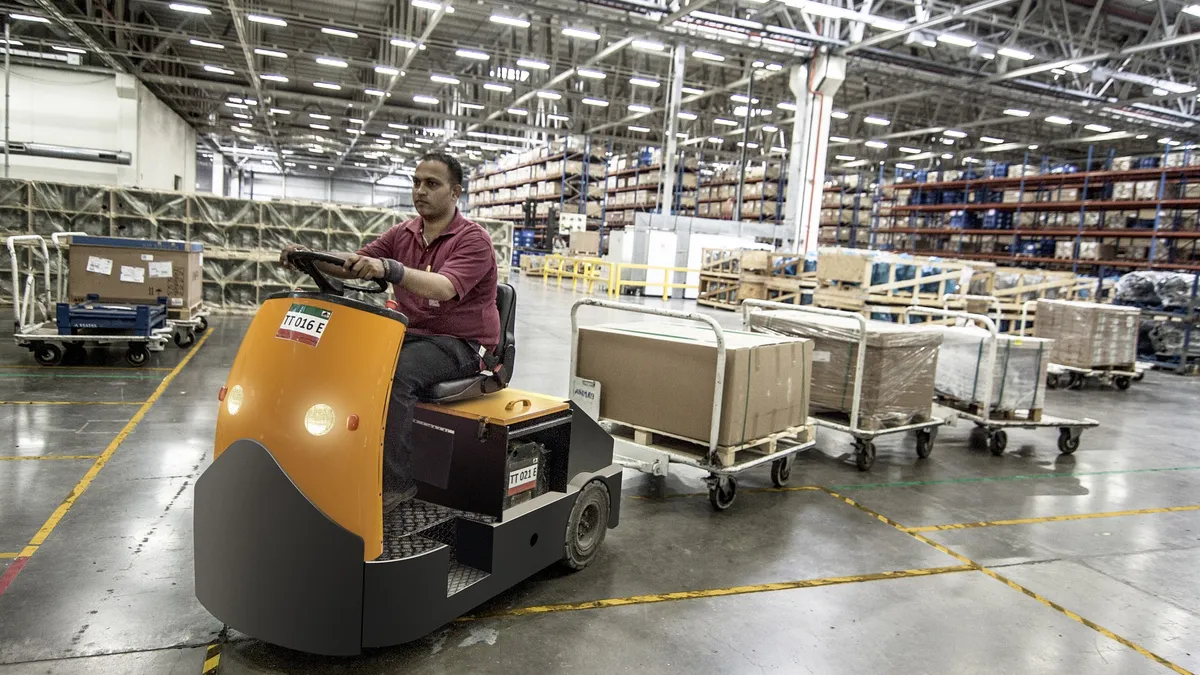E-commerce has changed how Americans shop and, according to a recent report from Dodge Data & Analytics, it’s also changing the way the construction industry builds.
Warehouses are being built with greater frequency, but they’re also getting bigger. The total square footage of warehouse construction starts increased from 49 million square feet in 2010 to 283 million square feet in 2018, although square footage peaked in 2017 at 300 million. And from 2007 through 2018, the number of warehouse projects of 1 million square feet or more increased from 23 to 48, a figure that represents more than 64 million square feet of space.
The 1 million-square-foot warehouse has become standard, Jeff Bischoff, executive vice president of business development at Lexington, Kentucky-based Gray Construction, told Construction Dive in an interview. Warehouses and distribution/fulfillment centers are some of Gray’s specialties. Historically they have made up about 35% of the company’s annual revenue, 20% so far for this fiscal year, he said.
Brick-and-mortar retail clients typically have internet sales components and are increasing their warehouse stock. However, Dodge found that most of the growth in e-commerce warehouse construction is coming from online-only companies like Amazon, which broke ground on 23 warehouse projects last year. Almost half of those were 1 million square feet or more, and four were the largest of all warehouse projects that broke ground in 2018.
Gray is an Amazon contractor and is working on a $325 million fulfillment center project for the internet retailing giant in Bessemer, Alabama.
Warehouses are usually ascertained by their footprint, Bischoff noted, and they often have multiple levels, so a two-level layout for something known as a 1-million-square-foot building is actually 2 million square feet. And these projects are not just the “shade and shelter” structures that used to define warehouse construction, he added. They require a special level of expertise, not only because of the fast turnaround time, which e-commerce companies are demanding so they can ship their products as soon as possible but also because of the technology that is becoming the norm.
Automated storage and retrieval systems, for example, are featured prominently in distribution and fulfillment center construction, Bischoff said. The robotics-driven technology can retrieve merchandise placed at heights of more than 120 feet with safety and efficiency.
Challenges and opportunities
The warehouse construction industry has been as hard hit as any other when it comes to the shortage of manpower. "Good, qualified professionals are at a premium," Bischoff said. “We're all searching for employees right now. Getting the best and brightest is something that we're all working hard to do.” The same goes for subcontractors.
But even with this challenge, he said business is booming for Gray and its group of core competitors, the size of which is shrinking as warehouse clients become more demanding and projects become more specialized.
“This is as good as we've seen it in our careers,” Bischoff said.











